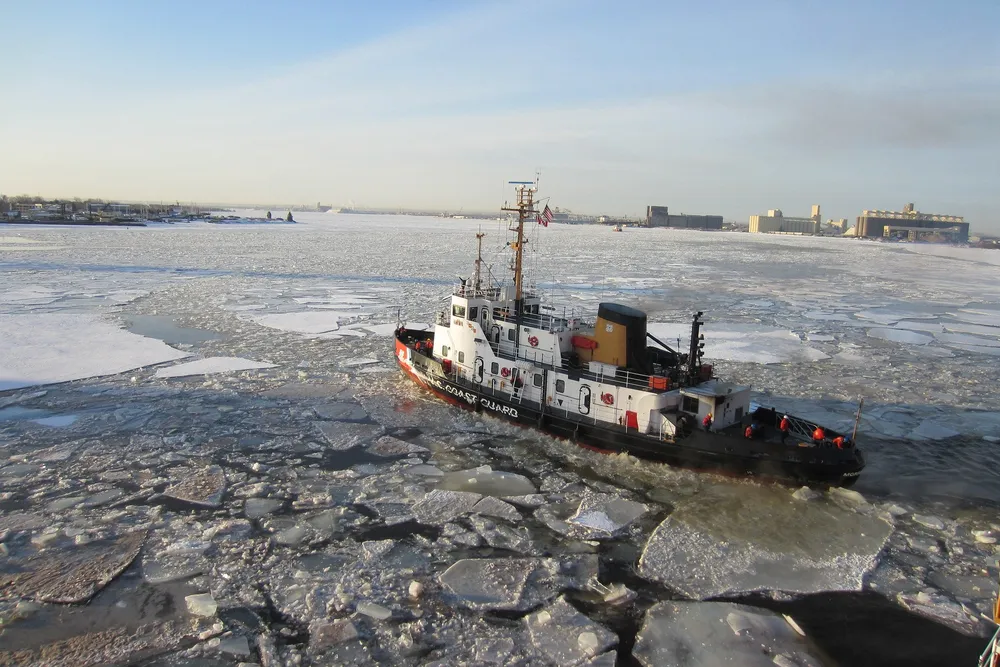Could Trump’s federal crackdown drive Great Lakes offshore wind?
IN DEPTH | Stellar resources in the vast freshwater bodies separating the US and Canada have long been in the frame for development but face myriad challenges

Could President Donald Trump’s targeting of offshore wind in federal waters finally launch development in the windswept Great Lakes sprawling across the centre of the North American continent?
A pair of researchers with the University of Wisconsin suggest it could, and in scholarly articles and news media argue that states should begin making plans to jumpstart development.
Trump’s numerous orders targeting wind and solar primarily impact projects on federal lands and waters, including all 5.9GW of offshore wind under construction.
“State agencies rather than federal officials are the trustees of the lakes,” said Melissa Scanlan and Cora Sutherland, director and assistant director, respectively, at the Centre for Water Policy at the university’s Milwaukee campus, in a recent article.
“Regulation of planning, site selection, leasing and other elements of offshore wind projects in the Great Lakes are the responsibility of one or another US state,” although federal processes would apply in other aspects, they added.
The opportunity is vast, and the five Great Lakes, from east to west, Ontario, Erie, Michigan, Huron, and Superior, hold an estimated 160GW of fixed bottom and 415GW floating wind potential, according to National Renewable Energy Laboratory (NREL).
This much wind power exceeds the annual demand in five of the eight bordering states, “illuminating a potentially large opportunity for transitioning to renewable energy,” NREL said.
Project hurdles
Any development would require at least some federal permits, though, including from the Environmental Protection Agency, the US Army Corps of Engineers, and the Department of Commerce, any one of which could (and based on recent actions) more than likely would kill or at least delay prospective projects.
Cost would likewise be a concern for Great Lakes offshore wind as it is for ocean development, potentially even more so due to daunting supply chain bottlenecks, particularly as installation vessels would be constrained by the St. Lawrence Seaway locks.
Distance from load centres and lack of transmission capacity are added obstacles to widespread development.
The impact of ice on the turbine foundations likewise needs to be solved, which would require extensive research of pilot projects.
No other projects have been proposed in its place.
The biggest hurdle Great Lakes offshore wind faces, however, is despite clean energy goals and mandates set by most surrounding states and rising electricity need, demand for lakeside development remains muted.
“There hasn't been a burning need to build in the Great Lakes, because there's been plenty of other places that are a little bit better,” said Marguerite Wells, executive director for renewables advocacy group Alliance for Clean Energy New York (ACE NY).
“There are still windy hill tops on land to do, and there are still salty ocean sites to build,” she added.
New York demurs
Even New York, which has extensive shoreline on both Lake Ontario and Erie and potentially the greatest need for clean power, remains aloof to Great Lakes offshore wind.
The state’s plan to decarbonise its dirty downstate grid surrounding New York City with 9GW of offshore wind by 2035 has been derailed by Trump’s onslaught, and New York State is now scrambling to meet its 70% clean energy grid by 2030.
Despite this need, a spokesperson for the New York State Energy Research and Development Authority (Nyserda), the agency charged with overseeing its energy transition, reiterated the agency’s disinterest.
“Great Lakes Wind currently does not offer a unique, critical, or cost-effective contribution toward the achievement of New York State’s Climate Act goals beyond what existing, more cost-competitive programs are currently expected to deliver,” Nyserda said in a 2022 feasibility, which according to a spokesperson remains the agency’s position.
“New York State continues to review all potential sources of affordable, reliable clean energy,” the Nyserda representative added, while the 2022 study said there may be “an opportunity to advance Great Lakes Wind at some point in the future.”
Setting a legal framework for leasing lakebed would be a first step.
Pennsylvania, which occupies a sliver of the shallowest of the Great Lakes, Erie, recently passed a bill in its lower House of Representatives that aimed to establish such a framework.
Sponsored by Democratic state representative Robert Merski, the bill would enable state regulators to lease lakebed while ensuring development of energy resources were adequately scrutinised and local communities benefit.
“What it is, is a framework that, in the event of somebody wanting to lease the land, there's a framework on how to how to do that,” he said.
The bill has been in the Pennsylvania state Senate since April last year, with no movement.
What would it take to generate interest in Great Lakes offshore wind?
ACE NY’s Wells speculated that surging power demand and lack of options could finally drive interest.
Until then, the sector will likely have to wait.
(Copyright)